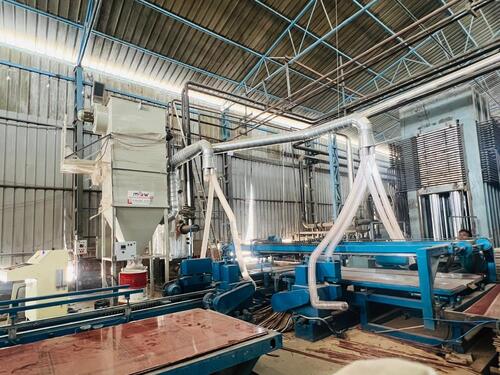Industrial Dust Collector
Industrial Dust Collector Specification
- Product Type
- Industrial Dust Collector
- Material
- mild steel
- Cooling System
- Other
- Capacity
- 6000 m3/hr
- Voltage
- 220 Volt (v)
- Weight
- 1150 Kilograms (kg)
- Dimension (L*W*H)
- 4*4*12 Foot (ft)
- Warranty
- 1 year
Industrial Dust Collector Trade Information
- Minimum Order Quantity
- 1 Unit
- Payment Terms
- Cash Advance (CA), Cash in Advance (CID)
- Supply Ability
- 1 Unit Per Week
- Delivery Time
- 1 Week
- Main Export Market(s)
- Asia, Australia, Central America, North America, South America, Eastern Europe, Western Europe, Middle East, Africa
- Main Domestic Market
- All India
About Industrial Dust Collector
* Cyclone Dust collectors are designed to effectively capture debris created during machining operations. They use a combination of centrifugal forces, inertial forces and gravitational force to separate particles from the air. They are available in a wide range of sizes, ranging from small single-cyclones to large, multi-cyclone outdoor collectors.
* The size of the cyclone has a significant impact on the efficiency of dust collection. The smaller the cyclone, the higher the efficiency. This is especially true for cyclones that are used in the purification of high-temperature flue gas.
* The particle behavior is also affected by the surface texture, geometric dimensions, and mass. It is important to measure the radial velocity of the particles, as well as the particle density. It is also necessary to collect data on the gas composition, pressure, temperature, and volume of the constituents.
* The air inlet of the cyclone has a major influence on the efficiency of dust collection. It is imperative that the receiver be airtight. To achieve this, a dead air space should be at least twice as large as the dust discharge.
* The tangential entry into the cyclone separator is also a key factor in its performance. The cyclone's diameter, air flow rate, and proportion of tangential entry must all be considered to optimize the separation.
* The inner vortex of the cyclone collects the finer dust, while the outer vortex carries the larger particles. The cyclone is capable of collecting particles as small as 1.0 micron.










Price:
- 50
- 100
- 200
- 250
- 500
- 1000+
More Products in Dust Collector Category
Cyclone Dust collector
Price 50000.00 INR / Unit
Minimum Order Quantity : 1 Unit
Material : Stainless Steel
Pulse Jet Dust Collector
Price 150000 INR / Piece
Minimum Order Quantity : 1 Piece
Material : Metal
Product Type : Pulse Jet Dust Collector
Warranty : 1 Year
Usage & Applications : Industrial
Bag Filter Dust Collector
Price 150000 INR / Piece
Minimum Order Quantity : 1 Piece
Material : Metal
Product Type : Bag Filter Dust Collector
Warranty : 1 Year
Usage & Applications : Industrial
Dust Collector on Drum Sending Machine
Material : Stainless Steel
Product Type : Dust Collector on Drum Sending Machine
Warranty : 1 Years
Usage & Applications : Industrial







